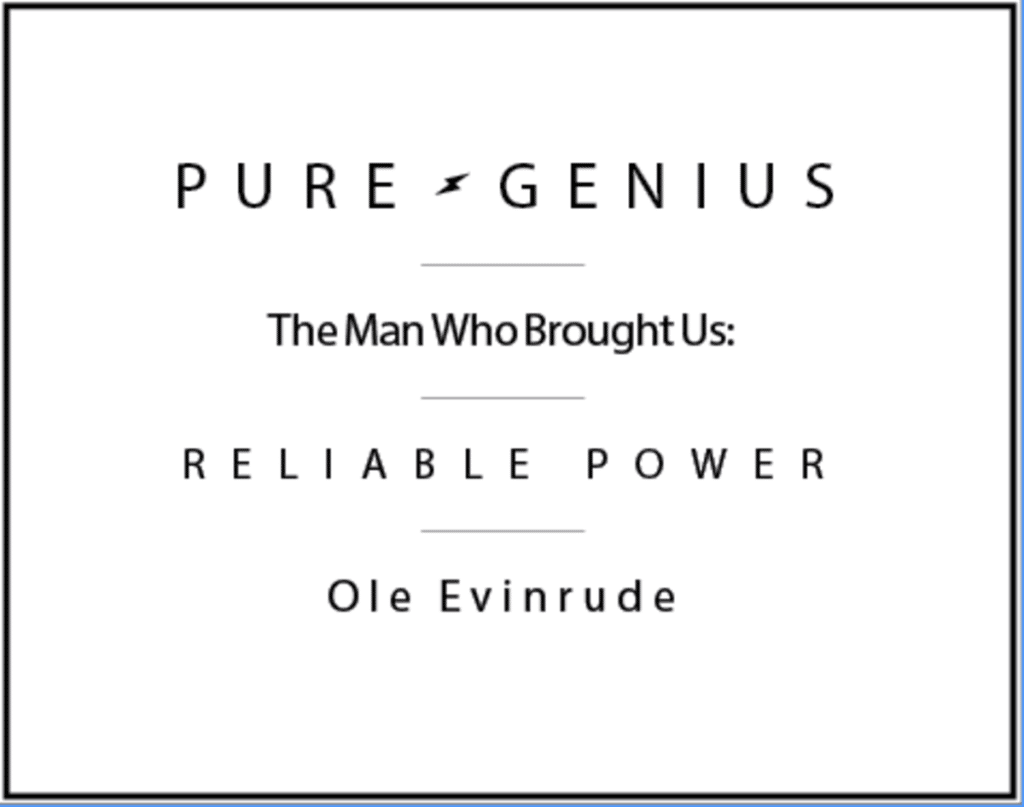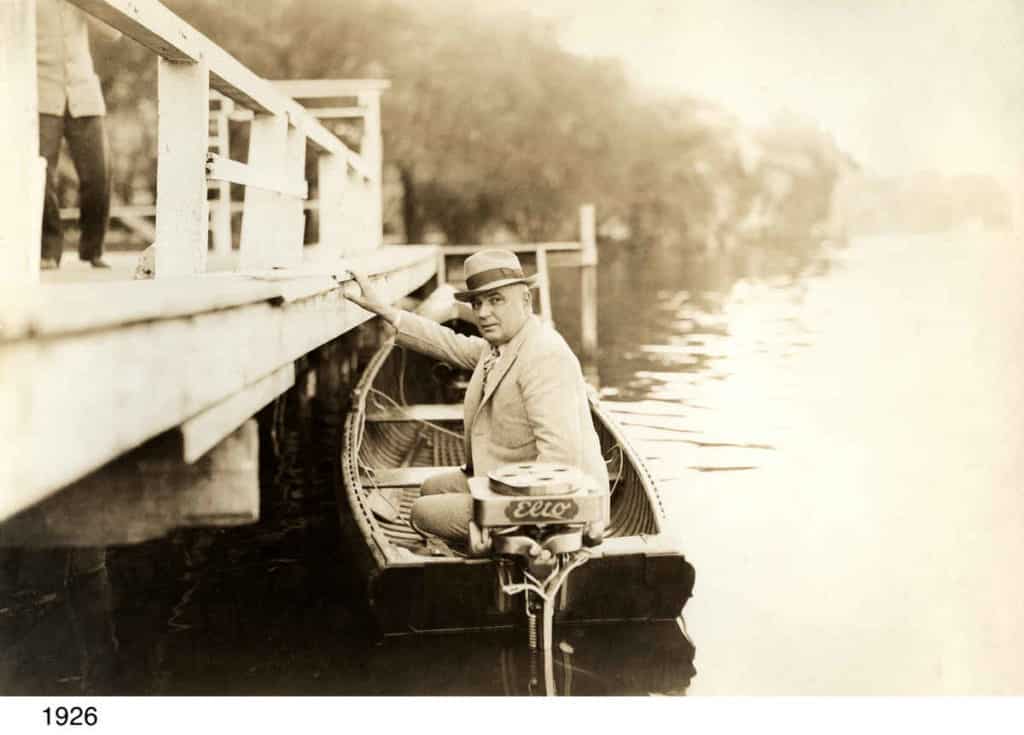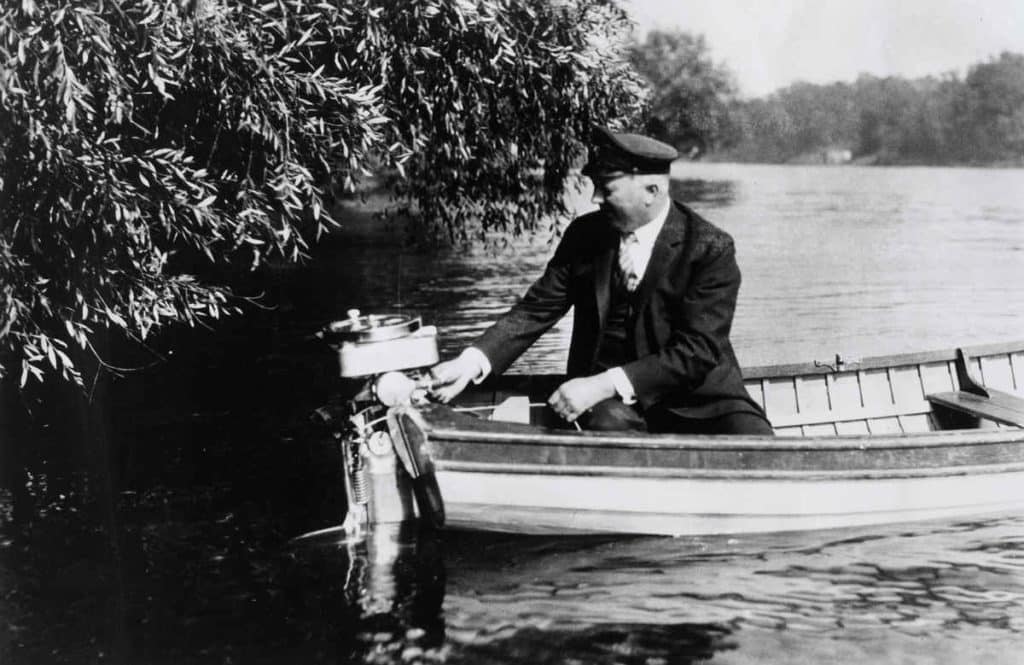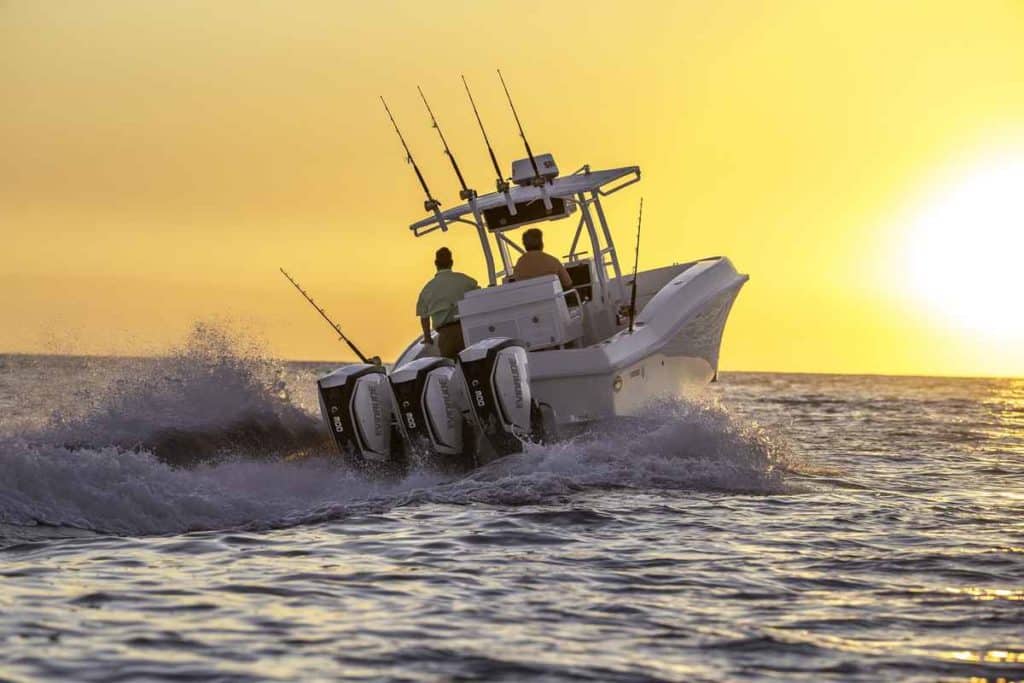
The story goes like this: A 29-year-old machinist, Ole Evinrude, asks a lady friend, Bess, to go on an island picnic with him in the summer of 1906. The island is a mile out on a big Wisconsin lake. The only way to it is by rowboat, and Ole is more than happy to do the oar work to impress his date. Once on the island, Bess says she’d really like some ice cream, which means Ole has to row back to shore in the heat. It also means he returns to Bess with a dish of ice-cream soup.
Ole was as much an opportunist as he was a gentleman. Not only did he get the girl — he and Bess married three months later — but he also embarked on a reliable alternative to oar power. By 1909, he built a single-cylinder 1.5 hp detachable rowboat motor. Bess, always with an eye on the future, said, “Now what are you going to do with it?”

The original Evinrude motor was not the first-ever outboard. The introduction of combustion engines had sent dreamers to their backyards to work on their own ideas. One was Cameron Waterman, who finished an outboard motor, the Porto, in 1906. What set the Evinrude apart, however, was an ability to mass-produce and market successfully.
“Bess was the difference maker,” says Dennis Evinrude, Ole’s grandnephew, now 64. “She knew how to spread the word beyond the forge shop where Ole was building motors.”
She and Ole were also aware that consumers would quickly become as fickle with engines as they could be with melted ice cream. Over the next 25 years, Ole kept raising the bar. A foldable outboard solved stowage problems. An electric-start motor made start-ups easier. A hooded outboard dampened noise and protected the motor’s parts.
The landscape of marine power was ready for tectonic shifts that continue to this day. Bigger. Lighter. Faster. Cleaner. Yet all of the latest innovations are founded on the ideas that were birthed more than 100 years ago. Ideas perfected, in large part, by Ole Evinrude and a girl who wouldn’t settle for just anything.


Evinrude is just one of five creative thinkers that Yachting profiled in its December, Spirit of Innovation, issue. You can read the other four here:









